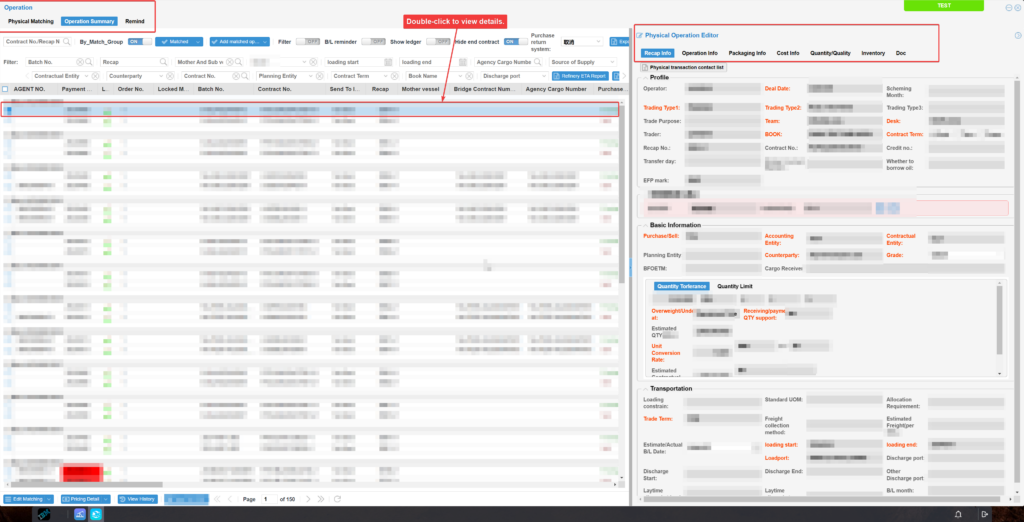In the global financial markets, commodity traders face a series of complex financial challenges. These challenges mainly include market volatility risks, credit risks, compliance risks, and diversified financial management needs.
These financial issues directly affect the efficiency and security of trade management:
- Market volatility risks create high uncertainty in pricing, hedging, and investment decisions, increasing the risk of trade failures or defaults.
- Credit risks arise when trading counterparts default, leading to potential economic losses. This is especially complicated in cross-border transactions, where risk assessment and management become more challenging.
- Compliance risks mean that companies operating in multiple countries must ensure their trades comply with regulations. If not, they might face hefty fines and damage to their brand reputation.
- The complexity of financial management is further reflected in multi-currency settlements and cross-region taxes. These factors increase the operational pressure on companies.
Take H Company as an example. As a globally recognized oil trader, its business spans multiple international financial markets, facing complex financial challenges:
- In terms of market risks, H Company needs to respond to crude oil price fluctuations in real-time. These fluctuations directly impact its trading decisions and financial status.
- For credit risks, H Company works with nearly a thousand trading counterparts. The credit status and default risk of these counterparts have become an important consideration in the company’s operations.
- For compliance, the company operates across various jurisdictions with differing legal and regulatory requirements. The compliance review and adjustments lead to substantial management costs and time delays.
Due to these practical challenges, H Company faces significant complexity in trade execution, risk control, and financial management. This affects cross-departmental collaboration, resulting in longer decision-making times and delayed information flow.
Facing the complexities of trade management caused by financial risks, Fusion serves as a comprehensive trade and risk management platform. It integrates financial, trading execution, and risk control functions, simplifying cross-departmental collaboration and data flow.
Through its integrated automation processes, Fusion helps companies efficiently manage trade processes and reduce the negative impact of financial risks. It also improves decision-making efficiency and compliance, ensuring the company can face complex challenges while achieving business growth.
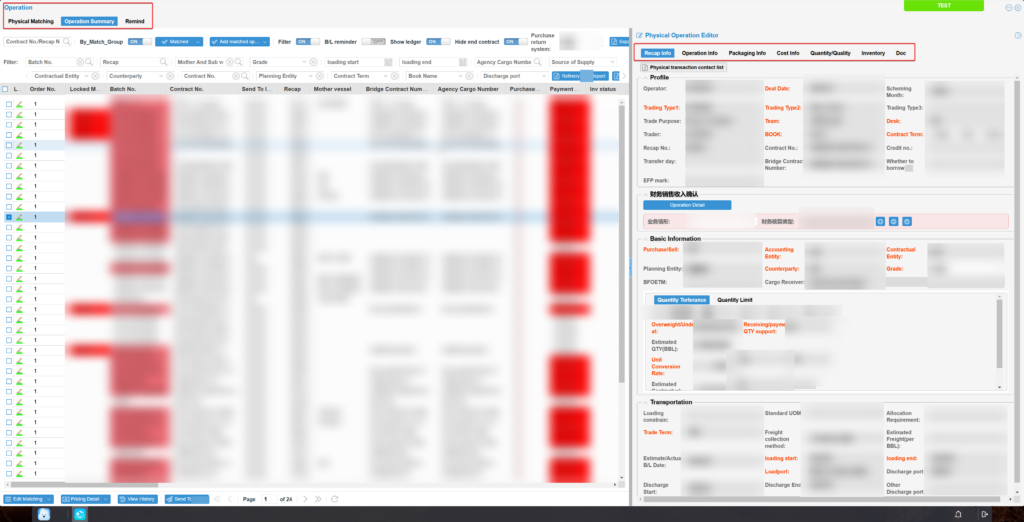
This article will explore in detail how the Fusion system simplifies trade management and optimizes risk control. It will also examine how it enhances operational efficiency, particularly in its application within companies like H Company.
Ⅰ. How the Fusion System Simplifies Complex Trade Management
The Fusion system includes core functions like data integration, automation, risk management, flexible process management, and powerful analytics. These effectively simplify the complexity of trade management and reduce the negative impact of financial risks.
1.1 Fusion Simplifies Complex Trade Management Through Data Integration and Automation
Fusion unifies core functions such as trading, risk, and finance into a centralized platform. This ensures all relevant data is seamlessly integrated and processed automatically, eliminating data silos.
Traders, risk control staff, and financial staff can complete their respective tasks on the same platform. This avoids inefficiencies caused by data fragmentation in cross-departmental collaboration.
Additionally, the centralized view of data integration provides a unified perspective on business, financial, and risk management. This helps the company achieve transparent operations.
This centralized management model not only simplifies trade management processes but also assists in optimizing decision-making, improving overall operational efficiency.
1.2 Fusion Helps Companies Identify and Address Financial Trade Risks in Real-Time with Comprehensive Risk Management
Fusion’s comprehensive risk management capabilities cover market risk, credit risk, and compliance risk:
- Market Risk: It provides tools for managing spot and futures transactions, market P&L, limit management, settlement management, portfolio and hedging plan management, ensuring trading safety. By introducing VaR (Value at Risk) analysis and stress testing, Fusion can predict potential risk losses. This helps companies take proactive preventive measures.
- Credit Risk: The system supports counterparty admission management, letter of credit management, and credit limit management, effectively mitigating credit risk.
- Compliance Risk: Fusion offers multi-dimensional compliance management functions, covering areas like compliance management and approval workflows. This ensures that trade operations comply with regulatory requirements.
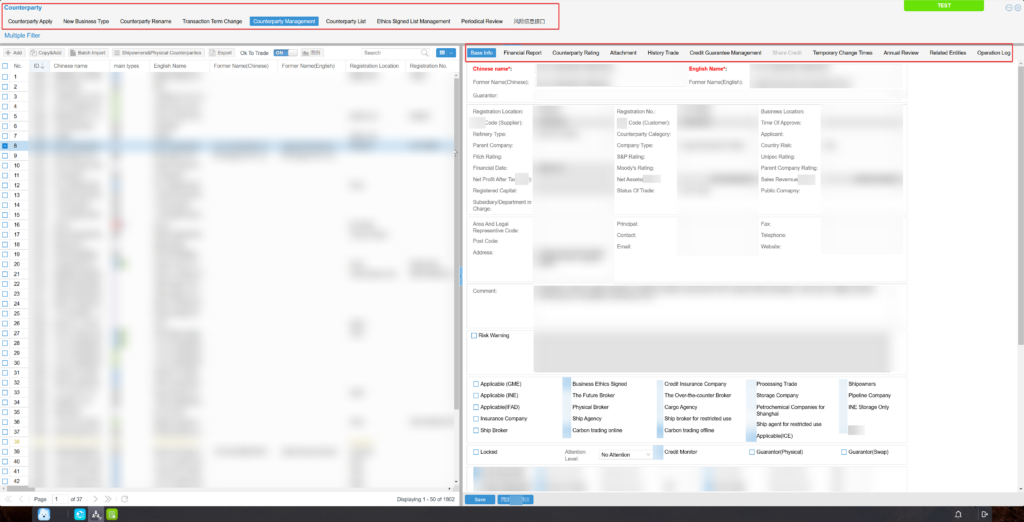
Through multi-dimensional risk management, Fusion simplifies the risk analysis and monitoring process, making risk management more transparent. It also reduces potential losses and operational disruptions caused by non-compliance, improving efficiency and security in trade execution.
1.3 Fusion Simplifies Complex Trade Management Processes with Modular Design, Custom Functions, and End-to-End Integrated Management
Modular, Custom Functions Optimize Flexibility in Trade Management:
The system modularizes business processes, such as spot trade, transportation execution, etc., allowing each part to operate independently. Businesses can flexibly adjust modules based on actual operational needs, improving management efficiency and flexibility.
The modular design allows companies to add or remove process nodes as required, ensuring the process remains clear and intuitive.
Fusion’s modules also support customization, enabling them to be configured based on specific business and regional needs. This allows employees in different regions to quickly adapt to local market requirements.
Consequently, the company can quickly adjust its operations to meet local laws, market conditions, and industry compliance needs, mitigating operational barriers caused by regional differences and addressing financial challenges brought on by compliance risks.
Through modularization and flexible customization, Fusion significantly enhances trade management flexibility and the company’s adaptability, allowing businesses to respond to market changes and implement strategies more quickly.
End-to-End Integrated Management Enhances Overall Trade Management Efficiency:
Fusion’s end-to-end management encompasses all aspects, from counterparty credit management, trade management, risk control to trade execution, logistics management, and inventory management, providing comprehensive visibility and integrated management.
Simultaneously, integrating and managing specific business processes, such as Fusion’s efficient financial management, which combines transaction, execution, revenue and cost, funds management, and settlement modules with financial reporting and other system data, seamlessly integrates financial control.
This integration not only improves liquidity but also accelerates trade execution and settlement processes, enhancing overall trade management efficiency.
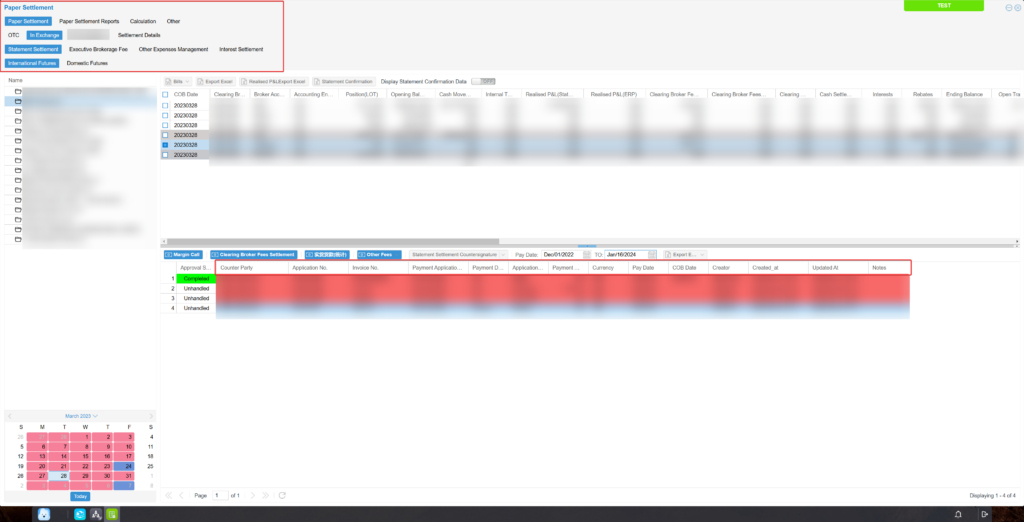
Through end-to-end management and integration, companies can more efficiently control the entire trade process, reduce management complexity, improve execution efficiency, and better meet complex market demands.
1.4 Fusion Provides Comprehensive Data Support Through Unified Data Management and Analysis
The system supports reporting and analysis across multiple dimensions such as risk control, credit, inventory, and finance, integrating data from various sources to provide broader perspectives for decision-making.
These analytical tools improve data quality and application value, helping businesses quickly identify market changes and potential risks, avoiding errors that might arise from manual data processing.
With real-time data analysis, Fusion provides a clear view of financial status, trade progress, and risk forecasts, further assisting management in making more efficient and precise decisions in complex trade environments.
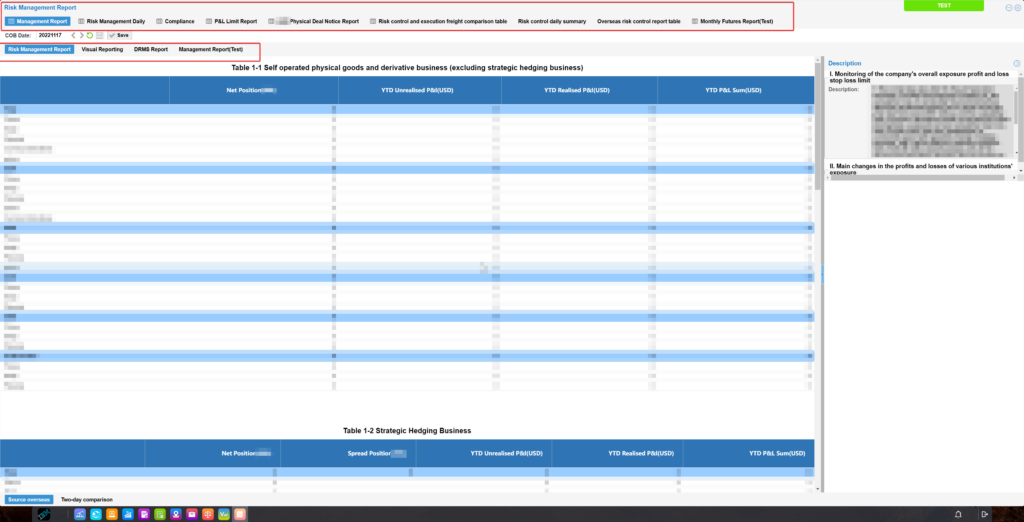
Through these functions, Fusion offers a comprehensive and efficient trade management solution, simplifying internal processes, improving decision-making transparency and operational efficiency, and enhancing financial risk prevention capabilities.
In practice, how does Fusion specifically address the challenges of complex trade management? Next, we will dive deeper into how Fusion performs in real-world applications, particularly through the case of H Company.
II. Case Study: The Application and Effectiveness of the Fusion System in Trade Management at H Company
Faced with the aforementioned complexities in trade management, H Company leveraged the core features of the Fusion system to effectively reduce trade management complexity, especially in addressing financial challenges. This is evident in the following aspects:
1. Improving Transaction Efficiency and Transparency
Fusion’s modular design enabled H Company to flexibly configure functional modules, allowing for a quick response to market changes. By utilizing risk monitoring and data analysis, H Company could promptly identify potential transaction risks and significantly enhance transaction transparency.
This not only reduced operational errors caused by information asymmetry but also ensured decision-making accuracy, effectively simplifying complex transaction management processes.
2. Comprehensive Risk Management
In the face of various risks in the global market, Fusion’s comprehensive risk management tools helped H Company achieve real-time monitoring of credit limits and market fluctuations.
For example, when a transaction exceeds the preset credit limit, the system automatically triggers a risk alert, enabling H Company to take timely action to control and avoid risks.
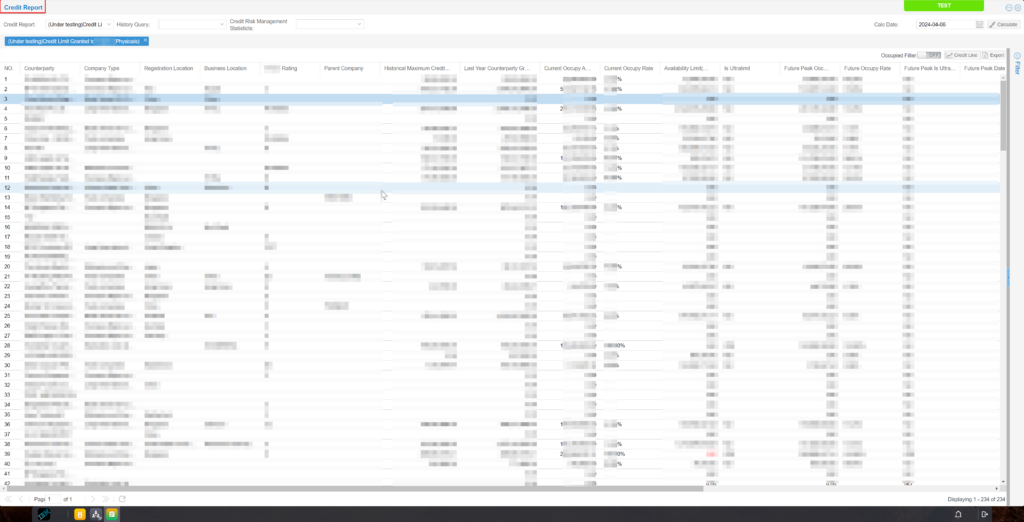
Fusion’s comprehensive risk management capabilities allowed H Company to minimize risk management complexity in a complex market environment, enhancing the safety and reliability of trade management.
3. Centralized Management and Collaborative Work
Fusion centralized the management of physical goods, financial derivatives, trade risks, and finances, greatly improving the efficiency of information flow.
Departments could share information on the same platform, promoting high-efficiency collaboration across teams.
This transparency reduced information silos, minimized communication costs, and streamlined management processes, resulting in a significant improvement in overall decision-making efficiency.
4. Flexibly Responding to Compliance Requirements
H Company operates in multiple countries, facing stringent compliance management requirements. Fusion’s customization features enabled H Company to adjust system settings based on local regulations, ensuring that transactions comply with local compliance requirements.
This flexibility not only reduced compliance risks but also enhanced the company’s competitiveness in global markets, simplifying the complexity of cross-regional compliance management.
5. Efficient Financial Management
Fusion’s financial management capabilities integrated transaction settlement, fund management, and financial reporting modules, allowing H Company’s finance department to efficiently monitor cash flow.
Through automation and data integration, the system reduced manual processing workload, significantly increased financial transparency, and minimized errors caused by human handling.
This efficient financial management allowed H Company to quickly access transaction financial status and reduced the complexity of financial management.
Results Achieved by H Company Through the Fusion System:
- Reduced Transaction Processing Time: By optimizing management through Fusion’s modular, automated, and integrated processes, H Company successfully shortened transaction processing time by approximately 30%, significantly improving overall operational efficiency.
- Enhanced Risk Control: Fusion’s real-time risk monitoring and analysis functions allowed H Company to identify potential risks earlier, reducing the transaction default rate by about 15% and increasing transaction security.
- Improved Compliance Management Efficiency: Fusion’s customization settings made H Company’s compliance management more flexible and efficient, reducing compliance review time by 40%.
- Increased Financial Transparency: Through integrated financial management functions, Fusion enabled H Company to monitor cash flow comprehensively, improving financial transparency by 50%, allowing management to make faster decisions.
From H Company’s practical application, it’s clear that the Fusion system effectively simplified trade management and enhanced risk control.
III. Conclusion and Future Outlook
The Fusion system, with its specialized technical capabilities, has simplified complex trade management processes and helped companies better address financial risks.
Through data integration and automation, comprehensive risk management, flexible process management, and robust data analysis, Fusion has improved operational efficiency and transparency, significantly reducing the impact of financial risks on trade management.
It enables companies to make more efficient decisions amid market fluctuations, credit risks, and compliance challenges, ensuring sustained growth.
As global trade accelerates, businesses face increasingly diversified markets and regulatory systems, with growing compliance requirements and financial risks.
These pressures force companies to seek efficient solutions. Many companies have failed to respond promptly to regulatory changes or market fluctuations, facing penalties or business disruptions.
For instance, a major international commodities trader incurred heavy fines and a trading ban due to violations of US sanctions on Iran. As a result, the company suffered significant economic losses and operational setbacks.
In this environment, Fusion continues to leverage its core advantages in financial risk management, compliance control, and operational optimization to help companies tackle future trade management and financial challenges.
As the system continues to upgrade, Fusion will provide more flexible, precise, and intelligent solutions, assisting companies in navigating the global market steadily and ensuring efficient and secure trade management.

